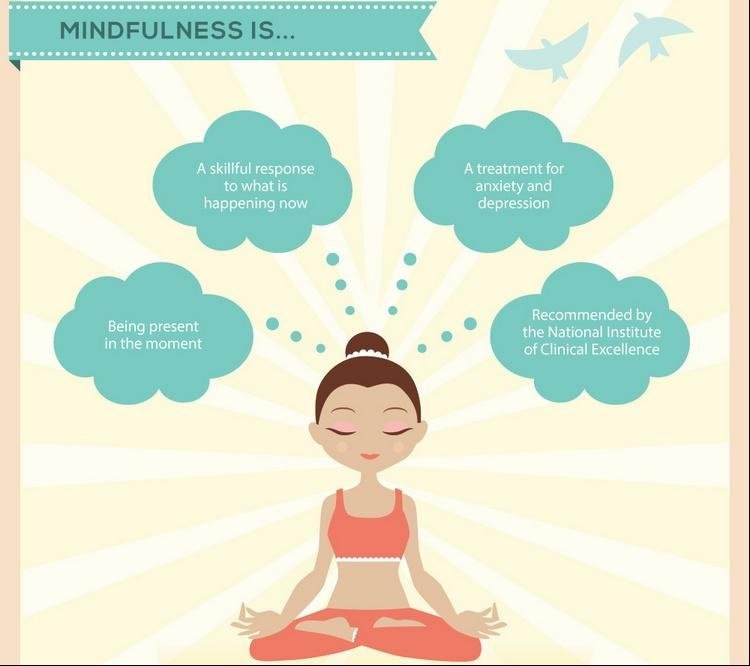The Importance of Mindfulness in the Workplace
In today’s fast-paced work environment, where deadlines loom and multitasking is the norm, finding a moment of peace can seem impossible. Yet, amidst the chaos, one practice stands out as a beacon of tranquility: mindfulness. Let’s dive into how mindfulness can transform the workplace into a more serene and productive space.
Understanding Mindfulness

Definition of Mindfulness
At its core, mindfulness is the practice of being fully present in the moment, aware of where we are and what we’re doing, without becoming overly reactive or overwhelmed. It’s about tuning into our senses and experiences, allowing us to respond thoughtfully rather than react impulsively.
Historical Background
Mindfulness has deep roots in ancient Buddhist traditions, but it’s far from being just a spiritual practice. Over the centuries, it has evolved and been embraced by various cultures and disciplines, finding its way into the modern corporate world.
Modern Adaptation in the Workplace
Today, mindfulness is not just for monks or yoga enthusiasts; it’s a powerful tool in the corporate arsenal. Companies worldwide are recognizing its potential to enhance employee well-being and improve overall performance.
Benefits of Mindfulness at Work
Improved Focus and Concentration
Ever feel like your mind is a browser with too many open tabs? Mindfulness helps in closing those unnecessary tabs. By training our attention, we can focus better on tasks at hand, reducing errors and increasing efficiency.
Enhanced Emotional Intelligence
Emotional intelligence is crucial in the workplace. Mindfulness fosters self-awareness and empathy, helping us manage our emotions and understand others better. This leads to more harmonious and productive work relationships.
Reduced Stress and Anxiety
In the high-pressure environment of modern workplaces, stress and anxiety are common. Mindfulness offers tools to manage these challenges effectively.
Stress Management Techniques
Techniques like mindful breathing and meditation can significantly reduce stress levels, promoting a sense of calm and balance.
Increased Productivity
With improved focus and reduced stress, productivity naturally increases. Mindfulness encourages us to work smarter, not harder, by staying present and fully engaged with our tasks.
Better Workplace Relationships
Mindfulness fosters a culture of openness and respect. When we are mindful, we communicate more effectively and build stronger, more positive relationships with our colleagues.
Implementing Mindfulness Practices
Mindfulness Meditation
Meditation is a cornerstone of mindfulness practice. It involves sitting quietly and focusing on your breath, helping to anchor your mind in the present moment.
Guided Meditation
Guided meditations are a great way to start. These sessions, often available through apps or online platforms, lead you through the process step-by-step.
Breathing Exercises
Simple breathing exercises can be practiced anytime, anywhere. Taking a few minutes to focus on your breath can quickly bring a sense of calm and clarity.
Mindful Listening
Listening is an underrated skill in the workplace. Mindful listening involves fully concentrating on the speaker without planning your response. This enhances understanding and reduces miscommunication.
Mindful Walking
Walking meetings or short mindful walks during breaks can invigorate the mind and body. It’s a simple yet effective way to integrate mindfulness into your daily routine.
Setting Intentions
Starting your day with clear intentions can guide your actions and keep you focused. It’s like setting a mental GPS for your day.
Creating a Mindfulness-Friendly Environment
Quiet Spaces
Having designated quiet spaces where employees can retreat for a few moments of peace can significantly enhance mindfulness practice.
Flexible Work Schedules
Flexible schedules allow employees to find their own rhythm and incorporate mindfulness practices without feeling rushed.
Challenges of Mindfulness in the Workplace
Resistance to Change
Introducing mindfulness in a traditional workplace can be met with resistance. It’s essential to address these concerns and highlight the benefits.
Time Constraints
Finding time for mindfulness can be challenging. However, even short, consistent practices can make a significant difference.
Misconceptions about Mindfulness
There are many misconceptions about mindfulness that can hinder its adoption.
Addressing Misunderstandings
Educating employees about what mindfulness is and isn’t can help in dispelling myths and encouraging practice.
Success Stories
Case Studies
Tech Companies
Leading tech companies like Google and Apple have integrated mindfulness programs with impressive results, showing significant improvements in employee satisfaction and productivity.
Healthcare Industry
In the healthcare industry, mindfulness has been used to combat burnout and improve patient care, demonstrating its versatility and effectiveness.
Testimonials
Personal testimonials from employees who have benefited from mindfulness can be powerful motivators for others to start their practice.
Conclusion
Mindfulness is more than just a buzzword; it’s a transformative practice that can enhance every aspect of the workplace. By embracing mindfulness, we can create a more focused, empathetic, and productive work environment. So, why not take a moment to breathe, reflect, and start your mindfulness journey today?
FAQs
What is the best way to start practicing mindfulness at work?
Starting with short, guided meditations can be very effective. Apps like Headspace or Calm offer excellent resources to help you get started.
Can mindfulness really reduce workplace stress?
Absolutely! Numerous studies have shown that mindfulness can significantly reduce stress levels, helping employees to stay calm and focused.
How long does it take to see the benefits of mindfulness?
While some benefits can be felt immediately, such as a sense of calm after a meditation session, it generally takes a few weeks of consistent practice to see significant changes in focus, stress levels, and emotional intelligence.
Is mindfulness suitable for all types of work environments?
Yes, mindfulness can be adapted to fit any work environment. Whether you work in a bustling office or remotely from home, mindfulness practices can be integrated into your daily routine.
What if my colleagues are not supportive of mindfulness practices?
It’s important to lead by example and share your positive experiences with mindfulness. Over time, as colleagues notice the benefits you gain, they may become more open to trying it themselves.





